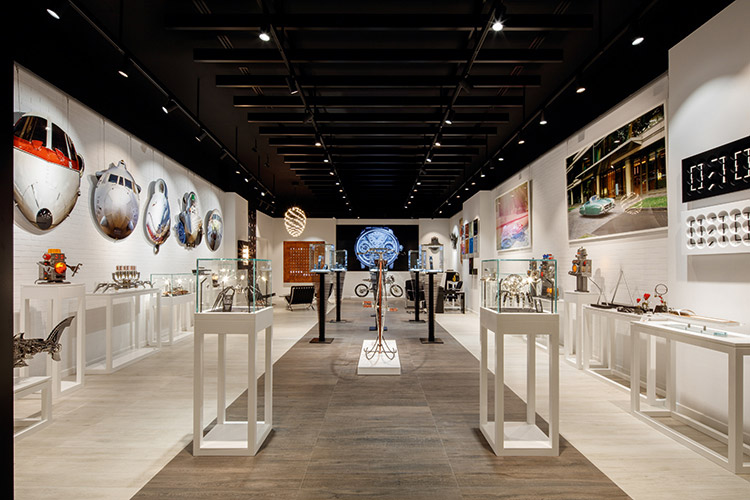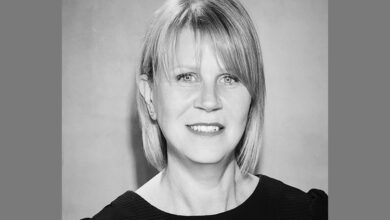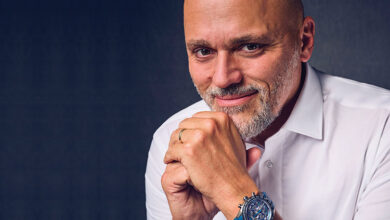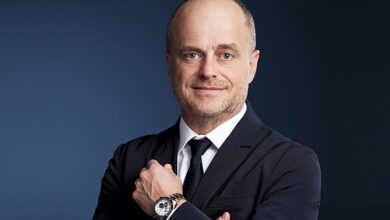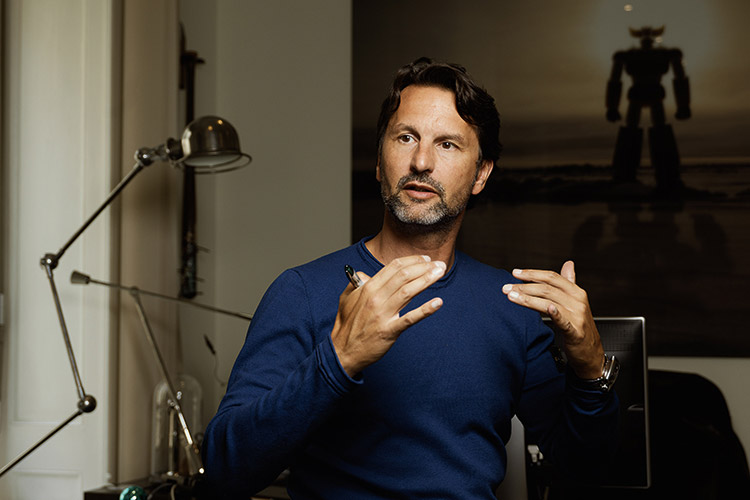
The rebel on the horological block, MB&F, is back in the news, this time with a new creation: the Legacy Machine FlyingT for the ladies. Here, we catch up with Maximilian Büsser, Founder of the haute horlogerie marque, and bring you a behind-the-scenes look at his thought process and inspirations…
Can you tell us a bit about your latest creation, the Legacy Machine FlyingT, the first watch you have created specifically for females?
For 14 years, I have been creating for myself; the whole point of MB&F was to create for myself. Then, about four years ago, I realised that I would not be who I am without my loved ones. My family is extremely small; my mother, my wife, and daughter. Now, my mother has passed, and I have another daughter – the three women in my life. I decided to get out of my comfort zone, which is creating what I like. I decided to create something for the women in my life, and it was excruciatingly difficult because I have lost the idea on how to create for somebody else. I also had no idea of how to create for a woman.
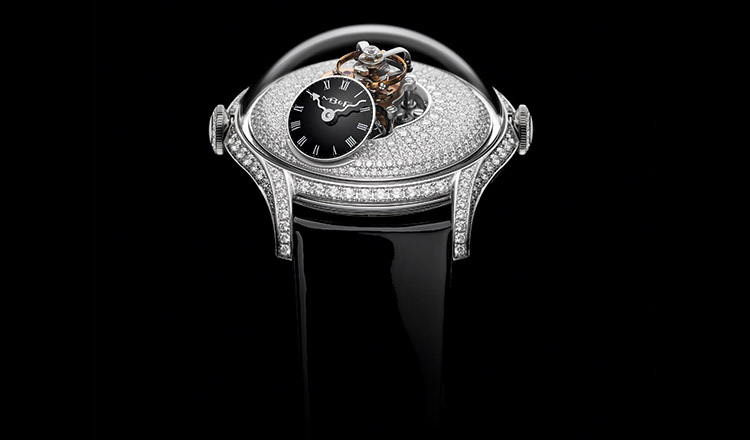
But you were with Harry Winston earlier?
It was an ordeal for me at Harry Winston to create women’s watches. That is why Harry Winston, during my tenure, focused a lot more on complications for men, because that is where I am more comfortable. I am not very comfortable with women’s watches. Then I had an epiphany; I should not create something because I think a woman will like it. I would create something for myself but embody in it everything I love about the women of my life.
The two women in my life always amaze me, so the product had to be super-amazing. They are vey energetic women and at the same time very elegant. I wanted something that is full of energy and at the same time super elegant. The whole idea of a sapphire dome with life underneath is because women bear life.
I then tried to create a movement that is elegant; this is not easy because it has to be a 3-D mechanical sculpture. We created the movement vertically and took out all the bridges, or at least, make you believe there are no more bridges. We have kept only the elegant dainty parts of the movement, which is why it is a flying tourbillon. It is not because I wanted a flying tourbillon, but that if you didn’t want a flying tourbillon, we would have a bridge on top of all of that.
My daughter has been wanting to be a ballerina for the past three years. She has these little boxes that when you open has a little ballerina twirling around. The tower twirling around, the flying tourbillon, is a bit like the ballerinas. I have positioned the display of time like this because this is a gift to my wife. I have positioned the dial exactly at 7o’clock so that only she can read the time. Everybody else can just see the sculpture but cannot see the time. At the back is the sun; as much as I think my women’s lives revolve around me, the truth is that my life gyrates around the women in my life. They are my sun!
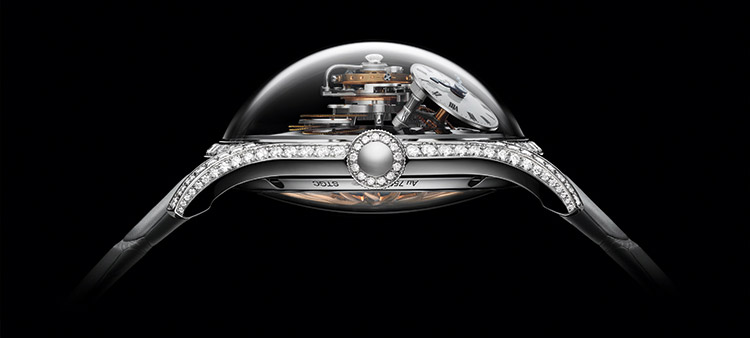
How long have you been working on this watch?
I have been working on this for around 3.5 years now. MB&F is my psychotherapy. I have been very angry for a lot of reasons for 10 years. Around four years ago, I started feeling more balanced. Having your family also helps in this. I felt like taking risks. Another factor is that I have seven-year creative cycles. I had worked seven years in Harry Winston, and then seven years in MB&F. I was doing Horological Machines, the HMs, in my seven years with MB&F. Then in my seventh year, I came up with the Legacy Machine and the M.A.D. Gallery, which then gave the Co-Creations. I needed to take a risk again, and that risk is creating a watch for women because that takes me out of my comfort zone. I do have other risks in the pipeline, but this will be for the second seven years, i.e., 14 years, of MB&F.
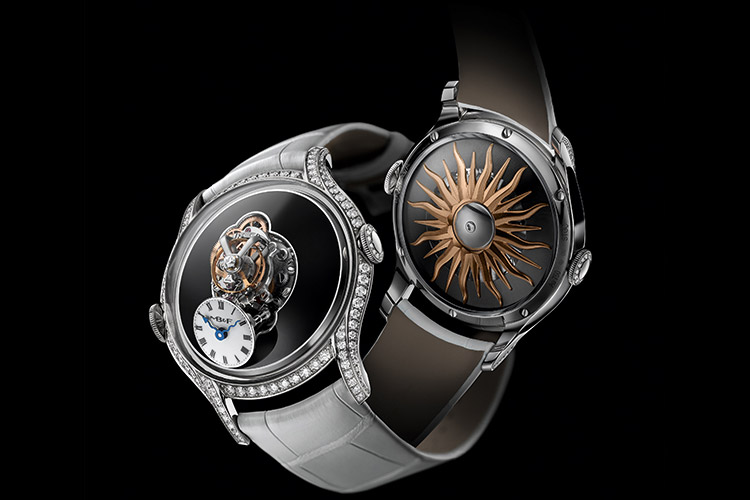
Is it a limited-edition watch?
It is going to be limited in the number of movements we make; we are crafting 35 movements a year. It makes no sense economically but it makes me happy and proud.
Are you proud of the watch, in view of the fact that MB&F is mainly a men’s watch brand?
I am very proud of it; I don’t know if people will like it but I am proud of it, and that is important. I think we have created something that has never been seen before, and at the same time is amazing and delicate. Again, at the end of the day, I create for myself and I think it is beautiful.
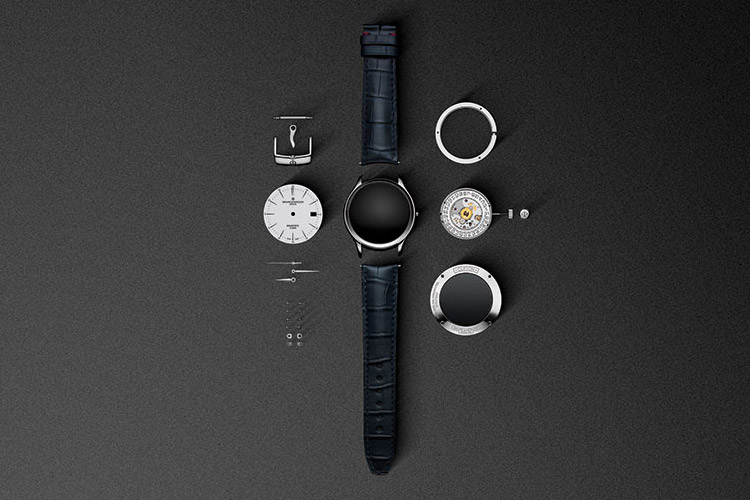
How has the reaction been from the retailers who have been shown the watch?
The retailers loved it; the press has been interesting because we started seeing women’s press before the launch. We have never spoken to women’s press before; there has been no reason to see the “Vogue”, “Marie Claire”, and the “Tatler” because we didn’t do women’s watches and they had no interest in what we were doing. We hired PR agencies in Paris and London, and I went there to meet them. They had incredible reactions; first, they hadn’t heard of us, so we had to tell the story, and how after 14 years, this is what I decided to come out with. Everyone of them went “Wow!”
One of the beautiful reactions I had was with the editor of “Vogue” Paris. She said, “I am so happy that a man is creating a watch for a woman, and hasn’t put pink straps, butterflies and flowers on it.” I said, “If I made that and gave it to my wife, she would make me eat it for breakfast.” She is not a woman who wants flowers and butterflies on a watch; she would never touch that. I am influenced by the women in my life, and I created what I believe they represent. Most women like butterflies and flowers, just not mine.
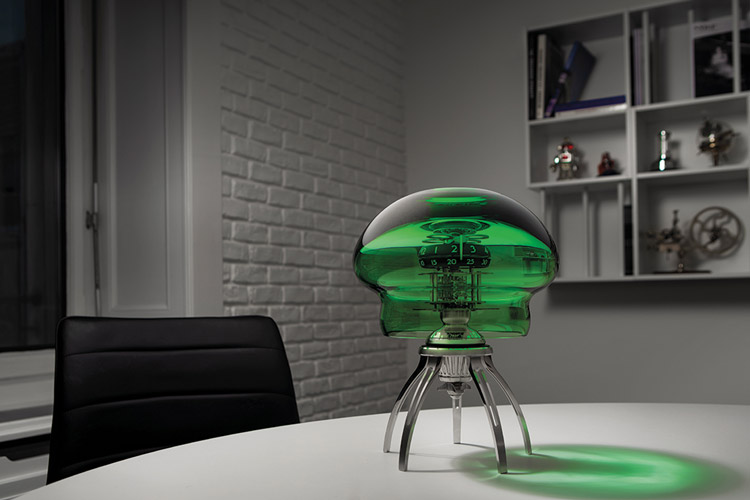
How did you get the idea for the Medusa, which you debuted in SIHH 2019 and is more organic and less mechanical than your other creations?
Interestingly, the idea was not mine. I have already done a mechanical jelly fish in the Aquapod, inspired by the time my wife was stung by a jelly fish. This is actually Fabrice Gonet’s idea. He is a well-known watch designer that I have known for years, who wanted to show me a project. I never ever see projects from third parties, but saw it only because he said that it is for a clock, not a watch. He had actually seen an Aquapod, and wondered if we couldn’t do a jellyfish clock. It is really his idea, and we did a few modifications to his design and worked with L’Epée and got it done.
The big issue was actually transforming that idea into reality with the glass. It is Murano glass. We first had to find somebody in Murano who would accept to do something as complicated. We don’t have any tolerances; the beauty of this is that every single dome is completely different – colour, shape, and so on. They had tolerances of 1 centimetre, while in watchmaking we work in 10s of millimetres.
They started to work on this in Murano, and L’Epée would go down there every six weeks to inspect them. Over 50 per cent is discarded and of the 50 per cent that makes the cut, all are of different sizes and shapes. They bring that back to their factory, where they measure every one of them and make all the metal parts that make the dome hold. Normally, the dome is made to fit the metal parts, but because this is all artisanship, it was the reverse. In this, you have to be able to hold the piece from the top, which holds the glass. Because it is suspended, it needs to be perfectly adjusted; so, they actually have to manufacture every single attachment system specifically for every dome.
Where do you see the future for the M.A.D. Gallery?
We have just opened the fourth one in Hong Kong, and we have plans for one in London. That was supposed to be this year, but has been pushed back, and if things go well, will open in 2020. It is all about finding the right partners; a M.A.D. Gallery is a labour of love; if you want to make money, don’t open a M.A.D. Gallery. If you want to have something incredible to be proud of, that will make your friends go “Wow”, then open a M.A.D. Gallery. But if you want to have a business, it is not a business. I have to find the right partner; none of them loses money, but they don’t make it either.

Can you find artists to fill up the M.A.D. Gallery?
That is my second problem; the first issue is partners while the second is artists. My Dubai branch is on fire; over the last three months, the number of art pieces sold is insane. So much so that half of the revenue of the M.A.D. Gallery in Dubai is art pieces. Our art pieces comprise 20-25 per cent of total sales. I went yesterday to our Dubai Gallery and they had sold two Gaby Wormann pieces over the weekend and they need to restock.
My biggest issue is finding artists. I need to find not just artists but artists whose works match the M.A.D. Gallery, and there are very few of them. They create very few quantities of work because they are not ‘business artists’ – people who have studios and people working for them. There is no market for what they do, and no gallery is interested to present them. These people have been working alone, sometimes for 15 or 20 years, and have no idea of how to grow their production.
I just have to find other artists. The business model in itself means that there will be very limited pieces. This actually works very well for MB&F itself because people who come to the M.A.D. Gallery are the kind of people who like a certain kind of art and may buy a HM. One of the reasons we opened the M.A.D. Gallery is because it is like a decoding machine; if you understand the artist we are presenting, maybe you will understand what we are trying to do. The first step of buying an MB&F can be buying a Gaby Wormann mechanical insect, a Medusa, or Willem van Weeghel’s kinetic painting. We have people come in only for MB&F, people who come for the art, and people who have no idea what it is and come in after seeing incredible things in the showcase and ask, “What is this?”, and they usually leave with a smile, which is the nice part.
